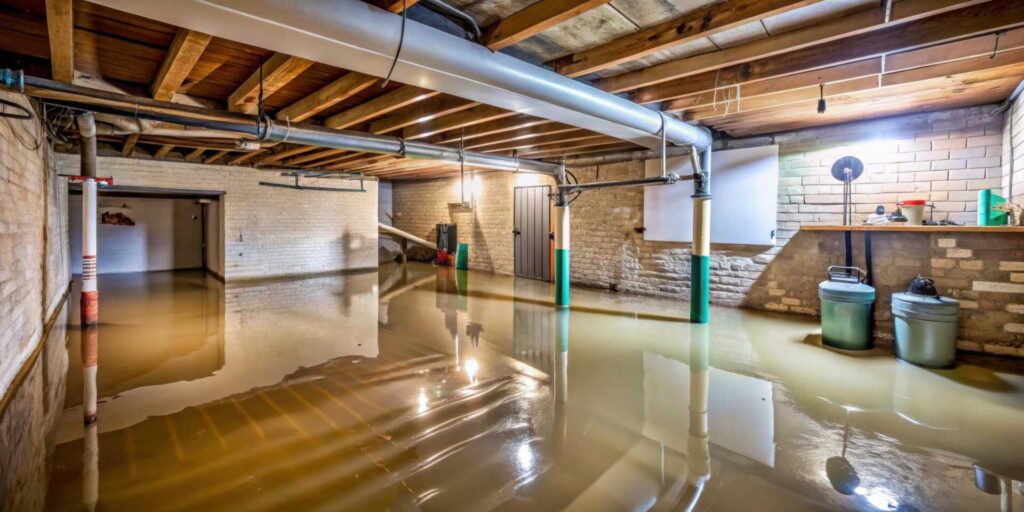
Contents
Did you know that mold can start growing within 24 to 48 hours after water damage occurs? It’s crucial to act quickly and follow expert tips to mitigate the risk. Understanding how to assess the damage, ensure proper ventilation, and utilize effective removal solutions can make all the difference. Let’s explore the top five strategies that can help you tackle mold effectively and prevent it from returning.
Key Takeaways
- Assess the extent of water damage by inspecting for mold, moisture, and structural integrity to inform remediation efforts.
- Ensure proper ventilation and use dehumidifiers to maintain indoor humidity levels below 60% for effective drying.
- Wear protective equipment, including N95 respirators and gloves, to safeguard against harmful mold spores during cleanup.
- Apply appropriate mold removal solutions like vinegar, bleach, or tea tree oil, following manufacturer’s instructions for best results.
- Monitor for future mold growth by regularly inspecting moisture-prone areas and maintaining consistent ventilation and humidity control.
Assess the Extent of Water Damage
Before you can effectively tackle mold removal, you need to assess the extent of water damage in your space.
Start by conducting a thorough mold inspection, identifying areas where moisture has infiltrated. Look for visible signs like discoloration, peeling paint, or warped surfaces. Use moisture meters to quantify dampness, focusing on walls, ceilings, and flooring.
Next, perform a damage assessment to determine the severity of the situation.
Evaluate structural components, insulation, and any belongings affected by water. Document your findings, as this will guide your remediation efforts and help you decide whether professional assistance is necessary.
Ensure Proper Ventilation and Drying
To effectively combat mold growth, you must ensure proper ventilation and drying in the affected areas. Begin by opening windows and doors to promote air circulation. This helps to reduce moisture levels and speeds up the drying process.
If outdoor conditions are humid, consider using fans to enhance airflow and direct it toward damp surfaces.
In addition to natural ventilation, dehumidifier usage is essential. Set up a dehumidifier in the affected zone to extract excess moisture from the air. This mechanical removal of humidity can greatly lower the risk of mold proliferation. Aim to maintain indoor humidity levels below 60% for ideal results.
Monitor the drying process closely, ensuring that all surfaces, including walls, carpets, and furniture, are completely dry. Regularly check for any signs of lingering moisture, as this can be a breeding ground for mold if not addressed promptly.
Use Protective Equipment During Cleanup
Using protective equipment during cleanup is crucial for your safety and health. Mold spores can pose significant risks, so adhering to safety protocols is imperative. Equip yourself with the right protective gear to minimize exposure while working in contaminated areas.
N95 respirator: Protects your lungs from inhaling harmful spores.
Rubber gloves: Prevents skin contact with mold and chemicals.
Goggles: Shields your eyes from irritants and airborne particles.
Before starting cleanup, verify you have these items on hand. Wearing protective gear safeguards your health and enhances your ability to work effectively in a hazardous environment.
Always remember to follow safety protocols, such as sealing off areas and using appropriate containment methods. By prioritizing your safety with the right equipment, you’ll be better prepared to tackle the mold removal process efficiently and effectively.
Apply Effective Mold Removal Solutions
Apply effective mold removal solutions promptly to prevent further damage and health risks. Start by selecting appropriate mold removal products that are specifically designed for the type of mold you’re dealing with. Ascertain you follow the manufacturer’s instructions for effective cleaning.
Here’s a quick reference table for effective mold removal:
| Mold Type | Recommended Product | Cleaning Method |
|---|---|---|
| Surface Mold | Vinegar or Bleach | Wipe and scrub |
| Mold on Wood | Tea Tree Oil | Spray and let it sit |
| Mold on Fabric | Hydrogen Peroxide | Soak and wash |
| Bathroom Mold | Commercial Mold Remover | Spray and rinse |
Once you’ve applied your chosen solution, allow it to sit for the recommended time to maximize effectiveness. Confirm thorough ventilation during the cleaning process to enhance air circulation and prevent inhalation of harmful spores.
Monitor and Prevent Future Mold Growth
After effectively removing mold, it’s important to monitor and prevent future growth to confirm your space remains healthy and safe.
Implementing mold prevention strategies is essential for maintaining a mold-free environment. Here are some key actions you can take:
- Regularly inspect areas prone to moisture, like bathrooms and basements.
- Use dehumidifiers to maintain indoor humidity levels below 60%.
- Ensure proper ventilation, especially in high-moisture areas.
Recap
By following these expert mold removal tips, you can effectively combat the aftermath of water damage and keep your space healthy. Think of it as your own battle against an unseen enemy, where each step is a strategic maneuver. Just like a skilled architect lays a solid foundation, you’re building a mold-free environment. Stay vigilant, monitor humidity levels, and remember that prevention is your best ally. With diligence, you can ensure your home remains a safe haven.
Recent Posts
Professional Mold Removal After Water Damage
You understand the significance of addressing mold growth, the dangers it poses, and the need
Why Choose Expert Mold Removal After Water Damage?
Mold can begin to develop within 24 to 48 hours after water damage occurs, posing
Reliable Basement Water Damage Cleanup Tips
Many homeowners believe that quick fixes can solve basement water damage, but the reality is
